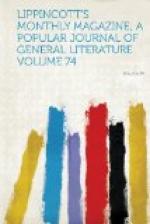ROBERT WILSON.
CONVENT LIFE AND WORK.
To those who have had but little opportunity to examine the inner workings of the Catholic Church the subject of the conventual life has always been something of a puzzle. Of course it has been difficult for them to obtain a personal insight into its details, just as it would be difficult to gain admittance into the mosque of St. Sophia or a Hindu community of religious. Curiosity, unsatisfied, betakes itself to hearsay, and since those who know most are generally most silent about their knowledge, it is to the gossip of ignorance or prejudice that curiosity looks for an answer. Distorted views or imaginary descriptions end by being received into the mill of public opinion, and issue thence ground into gospel truth and invested with mysterious (because fictitious) interest. It is strange that a phase of life which is in constant practice at the present day, often within a stone’s throw of our own doors, and which has personal ramifications in the families of our neighbors and acquaintances, should still be so much of a phenomenon to the public mind. In England, France, Italy, Germany and America I have been familiarly acquainted with it, have studied its principles and its details under many varying forms, and never found it less interesting because it was not mysterious. Human, fallible beings are the inhabitants of monasteries either for males or females, with individual peculiarities and different sympathies—by no means machines, but free and intelligent agents, each with a character as individual as that of separate flowers in a large garden—full of personality and of human imperfection.




